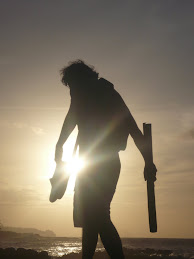Photo: Hunter Heaivilin teaches Village Design on Ifira Island, Vanuatu."How can we be
Self-reliant with our needs
So that we can become
Interdependent with our wants?"
-Hunter Heaivilin-
The Village Economy Game was played in order to demonstrate and give a practical experience of how to connect the products & functions of one local enterprise to the needs of another.
- Students are asked to create an enterprise that could meet a currently un-met need that they would be interested in pursuing.
- A functional analysis is performed to determine the needs, characteristics, functions and products of each enterprise.
- Students are asked to find car many connections as they can with other students enterprises (this typically results in much laughter and shenanigans), and then report back to the class about the connections they managed to make.
Here's a summary of the enterpises Vanuatu Villagers came up with, and the beginnings of the many connections that were made between enterprises (see if you can make connections of your own):
A simple shift in focus towards making these localized connections, can reduce our reliance upon external inputs while we are contributing to the vibrancy of our community. We can reduce our waste and cycle energy (in its many forms) within our community many times before it leaves.
Photo: 2012 Oahu PDC Village Economy Mindmap Timelapse


No comments:
Post a Comment